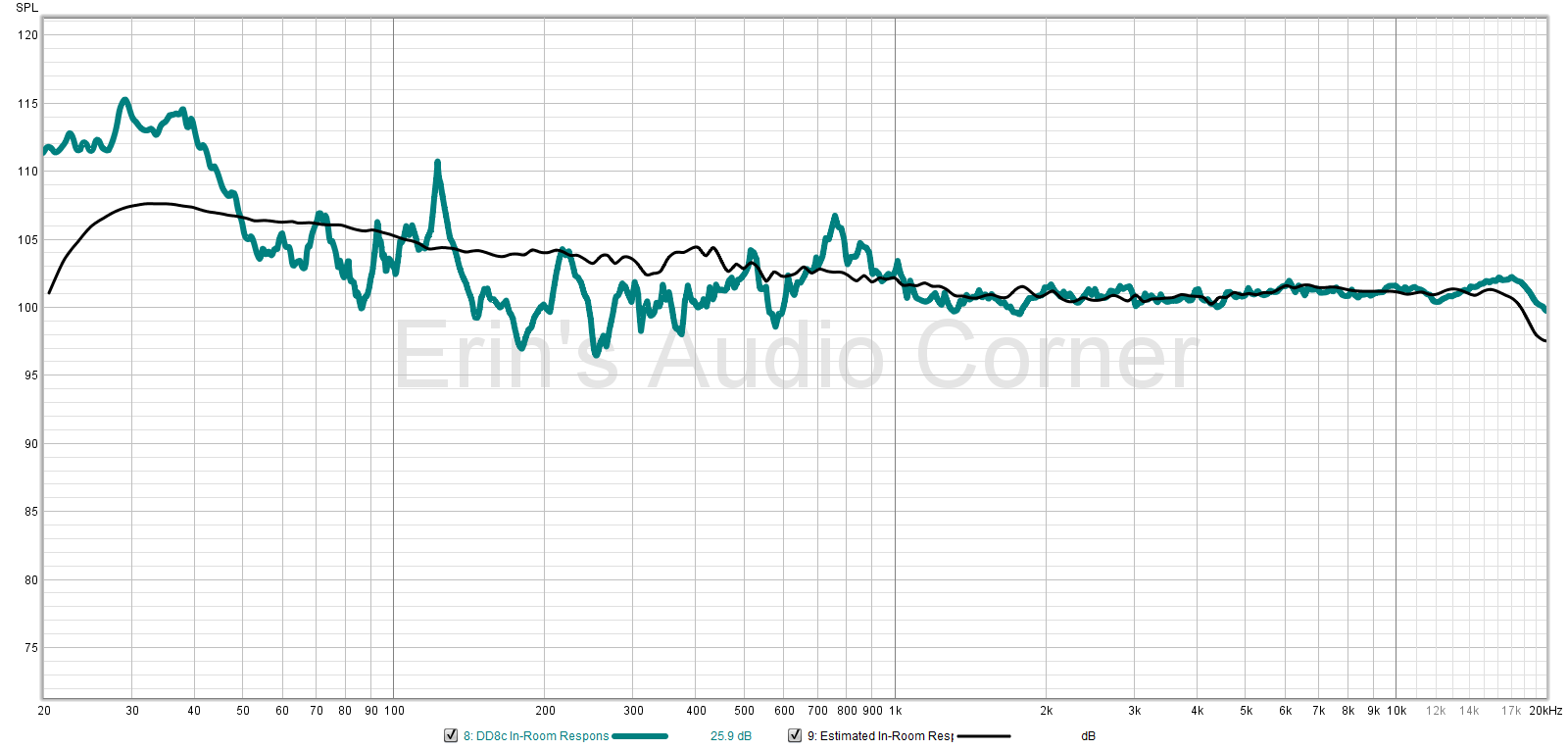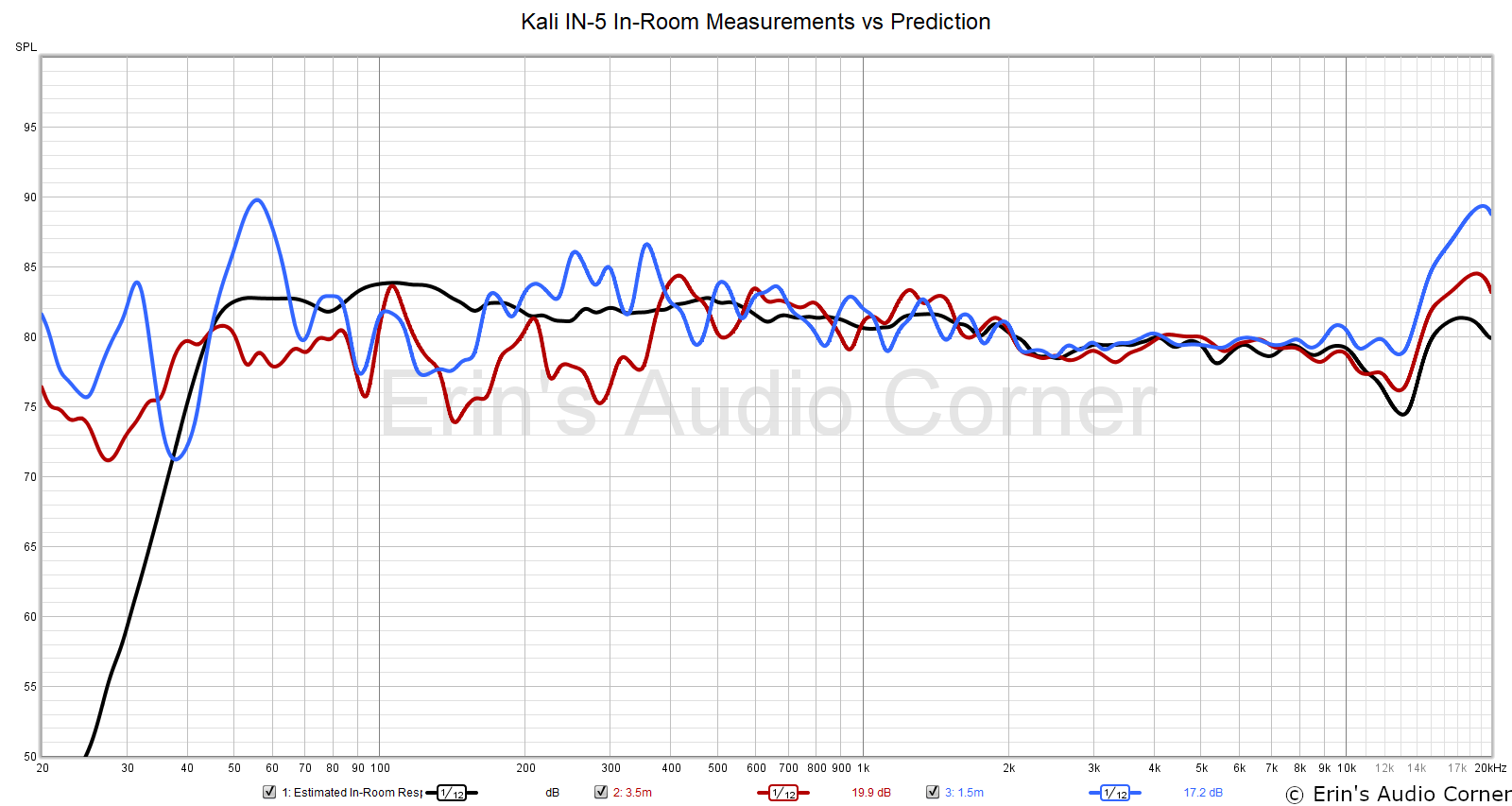We’re very used to seeing Amir and Erin’s estimated in-room response trend lines, sloping upwards from right to left, usually stopping at around 100Hz, depending on the speaker. And I believe it’s generally thought to be ‘correct’ if the left hand side is c.5dB higher than the right.
But if you were to add a sub, or if you had a truly full-range speaker (20Hz-20kHz) what should the trend line do, further to the left (between 100Hz and 20Hz).
Should it continue along the same slope, which I suppose would make 20Hz around +3dB over where it’s at at 100Hz? Flatten? Drop off slowly?
Or should you just leave the sub un-EQ’d (in respect of speaker FR)?
This is a very good question, and one that I've thought about several times through the years.
First, let us repeat why we see downward-sloping in-room response with well-measuring front-firing loudspeakers: it is because they exhibit increasing directionality with frequency. I.e. they radiate omnidirectionally at very low frequencies, and become more directional as frequencies go up.
E.g. if we look at Neumann KH150 spin we can see it becomes basically omnidirectional around 100Hz:
See how the ER/SP slope ends once the DI crosses zero (or more commonly: when DI crosses the DI offset curve).
Since this is now an omnidirectional radiation part of the response, the natural shape of the PIR curve should also be "flat" in this region - which is indeed what we see:
Note how the response is getting close to flat below 500Hz (where the DI value is already low) and gets quite flat <100Hz
Subwoofers naturally radiate omnidirectionally, so if we integrate a theoretically perfect subwoofer at the typical 80Hz crossover point the natural PIR of a flat on-axis integrated system would remain flat in this region.
This means that you'd end up having a PIR that is flat until about 100-200Hz, and increasingly sloped-down above it - with the slope depending largely on the specific loudspeaker DI shape (and room reflectivity and air absorption factor, of course).
So when listening at reference levels, I'd say the target curve for bass EQ should follow that same shape - flat in the bass and sloping-down above it, to follow the natural trend of the in-room measured response. Note that this is in principle similar to the famous Brüel & Kjær (B&K) room curve.
In practice, however, I find keeping the same slope in the low bass when performing EQ can be quite beneficial; and especially so if you listen at relatively low SPLs. I find the slope compensates a bit for the relatively low sensitivity of human hearing at very low frequencies (and low levels), making low bass more audible. At high SPLs the bass could become too much, so in that case you may prefer a flatter curve in the bass.
So to summarize, I'd say one needs to take the following factors in consideration when choosing the ideal target curve shape for bass EQ:
- Listening distance - less slope the closer you listen
- Room reflectivity - more slope the more reflective the room is
- Loudspeaker DI - more slope the more directional the loudspeaker is; but crossing to flat where DI becomes zero
- Expected listening levels - it can be beneficial to keep the slope in the bass when listening at low SPLs



